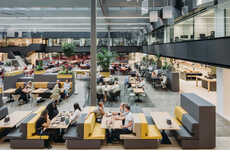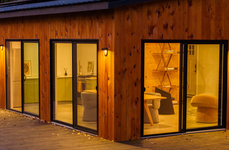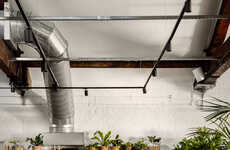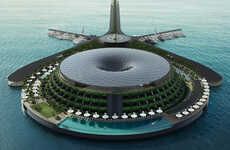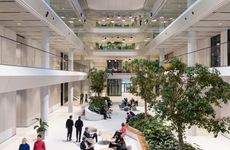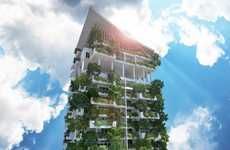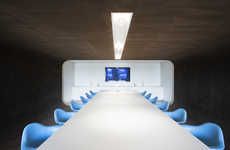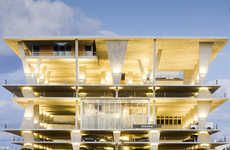
This OFIS Office Complex Has A Futuristic Carbon-Neutral Design
This OFIS office complex might have a bold exterior, but its impact on the environment has been painstakingly designed to be as minimal as possible.
With a host of sustainable energy sources for its many functions, the OFIS office complex makes use of groundwater, wind, and solar energy sources simultaneously. This allows it to govern its interior temperatures, water heating, and lighting, while rainwater recycling/catching keeps the building hydrated.
Implications - With so many elements harming the environment in today's modern society, consumers are looking for ways to protect the planet. Items which feature a sustainable method of production are appealing to those who want to stay green-friendly. Incorporating an eco-conscious aspect into its products could help a company stay appealing.
With a host of sustainable energy sources for its many functions, the OFIS office complex makes use of groundwater, wind, and solar energy sources simultaneously. This allows it to govern its interior temperatures, water heating, and lighting, while rainwater recycling/catching keeps the building hydrated.
Implications - With so many elements harming the environment in today's modern society, consumers are looking for ways to protect the planet. Items which feature a sustainable method of production are appealing to those who want to stay green-friendly. Incorporating an eco-conscious aspect into its products could help a company stay appealing.
Trend Themes
1. Sustainable Energy Sources - Incorporating sustainable energy sources into office complexes presents disruptive innovation opportunities, meeting the growing demand for green-friendly buildings.
2. Rainwater Recycling - Developing efficient rainwater recycling systems in buildings creates disruptive innovation opportunities for sustainable water conservation and management.
3. Carbon-neutral Design - Designing carbon-neutral complexes offers disruptive innovation opportunities for eco-conscious architecture and sustainable building practices.
Industry Implications
1. Architecture - Architecture firms can seize disruptive innovation opportunities by integrating sustainable energy sources and carbon-neutral designs into their projects.
2. Construction - The construction industry can harness disruptive innovation opportunities by incorporating rainwater recycling systems and sustainable building practices.
3. Renewable Energy - The renewable energy industry can explore disruptive innovation opportunities by providing sustainable energy solutions for eco-powered complexes.
3.6
Score
Popularity
Activity
Freshness


